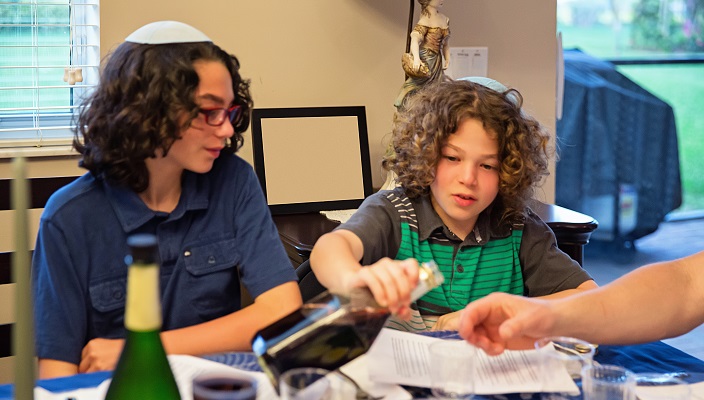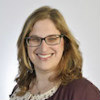
The Passover seder encapsulates so many of Judaism’s most important values: to feed the hungry, to teach our children our Jewish history, to gather our families together in celebration, and to imagine ourselves as if we were slaves in Egypt as a way to inform how we treat others.
In the middle of the seder, we arrive at The Four Children (sometimes called The Four Sons) – the wise, wicked, simple, and one who doesn’t know how to ask – whose views of the world uncover even more values that are important to us as Jews.
We find The Four Children in the maggid (“telling”) section of the seder, during which we retell the Israelites’ journey from slavery to freedom. We remind ourselves of this redemption story in many different ways as we proclaim that the matzah is the “bread of affliction,” ask the Four Questions, recite the Ten Plagues and sing The Four Children originated in four distinct passages in the Torah that instruct us to teach our children about the story of Passover. The labels given to these children, as well as their questions, were compiled from the Torah and other Jewish sources over time.
- The wise child asks details about the specific meaning of the laws of Passover observance: “What are the testimonies, the statutes, and laws which Adonai our God has commanded you?” to which we respond with one of the very specific laws of the Passover seder.
- The wicked child asks, “Whatever does this mean to you?” The authors admonish this child as one who is not concerned about the laws personally, but only for others. This exchange reminds us of the importance of not separating ourselves from our community or from traditions that might seem uncomfortable or foreign to us, but rather to engage with them in ways that enable us to connect with our community.
- The simple child asks, “What does this mean?” to which a straightforward summary of the story is given, directly from the Torah: “It was with a mighty hand that God brought us out from Egypt, the house of bondage.” (Ex 13:14).
- In response to the child who does not know how to ask, we are instructed to “open it up” and explain, “It is because of what God did for me when I went free from Egypt” (Ex 13:8).
Reciting The Four Children reminds us of the Jewish obligation to teach the next generation about this powerful story, and, importantly, not to tell the story in the one way that might be easiest for us. Rather, we should invite our children to be a part of the conversation, strive to meet the children where they are individually, respect the way each one learns and interacts in the world, and respond accordingly and appropriately.
Through the different kinds of children and their questions (or lack thereof), we get a sense of different kinds of people as individuals and learners. There are those who are interested and find meaning in all the details and specific rules of Passover – and perhaps, too, of life in general. Others don’t connect to these rituals, while some want to understand the basics, and still others who might be overwhelmed or not interested enough to participate.
A key message of The Four Children is that all are welcome at our seder, all should be taught, and we should strive to embrace all learners in the experience of the seder and the story of Passover. There is wisdom in the idea that we should “open it up” for the one who does not know how to ask. How can we find creative ways to open the story of Passover – with all its history, values, and relevance to today – to all those who are eager to learn?
In addition, there are pieces of each of The Four Children in all of us. In specific situations, we might feel more wise, wicked, simple, or not know how to ask and in these scenarios, the dominant characteristic may influence how we think or behave. The Four Children remind us that all of these attributes are legitimate and valid, and it is our responsibility to respond in ways that are most appropriate at a given time – helping our children, our community, the next generation, and ourselves.
Even as the Passover seder instructs us of our responsibility to recount our story, The Four Children remind us to make it accessible by teaching it in ways that lead to understanding, engagement, and action. In telling the story of our past, it is our obligation to respond to all questions so as to demonstrate that everyone, including the next generation, is contained in our history, connected to the community, and has a role to play in the evolving story of the Jewish people.
Chag sameach!

